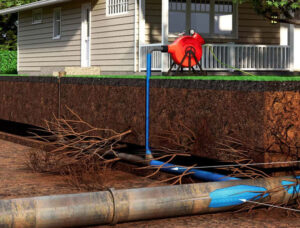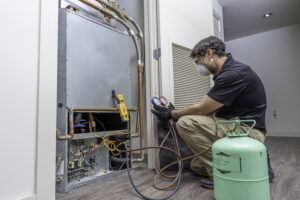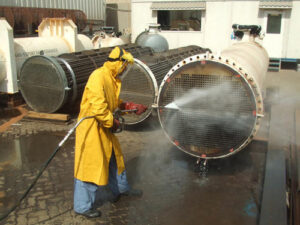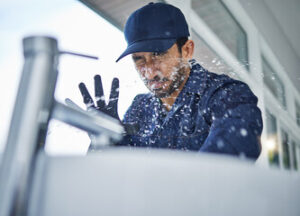If wastewater backs up into your drains and toilets, it is a clear sign that the septic tank needs to be pumped. Reputable Septic Tank Pump Out Perth companies will come to your home with larger trucks and hoses that suck up the sewage into their truck for proper disposal.
It’s a good idea to have your septic tank pumped before hosting large parties. This prevents a sudden overload of the onsite system.
Slow Draining Fixtures
Whenever sewage is flushed into a home’s plumbing system, it enters a series of porous pipes that lead to the septic tank, where anaerobic bacteria neutralize pathogens and break down other solid waste. Eventually, this liquid wastewater is dispersed into the ground through a drain field, where soil filters and breaks down remaining organic waste and minerals. The septic tank must be emptied periodically to maintain proper function and prevent overflow.
The amount of waste that a septic tank holds can have a big impact on how frequently it must be pumped. Households with more people or those who flush large amounts of non-organic solids, such as plastics and kitty litter, tend to fill up the septic tank faster than others, requiring it to be pumped more often.
Over time, the heaviest part of the waste in the septic tank settles to the bottom as sludge and lighter, grease-like material rises to the top as scum. Between the sludge and scum is the clear, liquid effluent that sits in the middle of the two layers.
During pumping, a professional service company uses a vacuum truck to remove the sludge from the septic tank and then pumps out all of the scum and effluent into a tank-shaped truck. The waste is then taken away to a licensed landfill for disposal.
While it’s important to stay on a regular pumping schedule, it’s just as crucial to avoid overfilling the septic tank. Waiting until the septic tank is full can result in costly visits from a plumber for repairs, clogs and other problems.
One of the best ways to keep your septic tank from filling too quickly is by limiting how much water you use. Low-flow toilets, reducing your water heater’s temperature and repairing leaky faucets can significantly lower how much wastewater is entering the tank. Also, be sure to have family and guests learn what items aren’t safe to flush down the toilets, such as paper towels, cotton balls, tampons, feminine hygiene products and “flushable” wipes, which are notorious for creating expensive clogs. Educating everyone about the importance of septic tank maintenance and avoiding these harmful materials can help your septic tank last longer between septic tank pump out services.
Sickly Odor
The odor of a septic tank is not something anyone wants to smell. The sickly stench is caused by the digestion of organic waste by anaerobic bacteria. The bacteria break down the waste materials to produce methane, carbon dioxide, hydrogen sulfide, and other toxic gases. These gases are then emitted through the drain field and into your home. If you notice a foul smell, it could mean that your septic system needs to be pumped out or has an issue with the digesting process.
It is important to have your septic tank pumped on schedule. If you don’t, the septic system will overflow and sewage will seep into your home through the drains. This is a dangerous situation that can lead to serious health issues and costly repairs for your plumbing system. If you have a septic system in your home, you should hire a professional plumber to handle its maintenance and inspections. A regular septic tank pumping schedule, coupled with a proper treatment regimen, can reduce how often you need to get it pumped and extend its life by several years.
When you flush nonbiodegradable items like unused medications, paper towels, tampons, dental floss, condoms, and wet wipes down your toilets, the septic system can become clogged and require more frequent pumping. Similarly, the use of harsh chemical-based cleaners can kill the microorganisms in your septic system and prevent it from digesting effluent properly.
If your septic system is working correctly, it will discharge the liquid waste to a drain field prepared with gravel and other aggregates to help filter and disperse the wastewater. The heaviest material, called sludge, sinks to the bottom of the tank while fats and oils float on top to form a layer known as scum. Liquid waste flows into the drain field via a series of porous pipes where it is further broken down by bacterial action in the soil before being filtered into groundwater supplies.
A lush green lawn above your septic tank or drain field is another sign that something is amiss. The wastewater that drains out of the septic tank and into the drain field acts as a fertilizer, so the excess growth may be an indication that the septic system is overflowing or that it needs to be pumped out.
Untreated Wastewater Filters Into Your Yard
The septic tank is a big container in the ground that collects wastewater from your toilets, showers, sinks and laundry. It contains a mix of solid waste, known as sludge, and liquid waste, called effluent. It is lined with concrete or fiberglass and has a heavy lid on top to keep animals, dirt, debris and water out. When it gets full, the sludge and effluent drain through a pipe into a soil absorption field. The soil filters the sewage and removes bacteria. The remaining liquid then seeps into a nearby watercourse or groundwater supply. An unlined or failing septic system lets the waste enter these water sources and may make you sick.
Keeping up with septic tank pumping schedules can help you avoid these problems. It also helps you save money. A well-maintained septic system typically fills up faster and requires less frequent pumping. It is not uncommon for a tank to need to be pumped once every three years with typical usage.
If you wait to get a septic tank pumped, the waste can build up to a point where it overflows and leaks into your yard or back into the home. This can be a messy and costly cleanup project.
In addition, a clogged septic tank can create an unpleasant and unhealthy odor. As a result, you will not be able to enjoy your backyard as you should.
You can do your part to prevent clogged septic tanks by having a family meeting about what not to flush. Teach your family members to only use the toilets for human waste and discard paper towels, feminine products, dental floss, and other items in the trash.
Another way to prevent septic tank clogs is to make sure the inlet baffle in your septic tank is in good condition. It is an important safety feature that prevents sludge from entering the absorption field when you flush the toilet. The inlet baffle should be made of a sturdy material like cast iron or plastic. It should be sized to match the volume of your household’s daily sewage. If your inlet baffle is damaged, a septic tank service technician can install a new one.
High Water Bills
Getting your septic tank pumped on a schedule will save you money in the long run. However, if you get your tank pumped too frequently, it can cause problems for the drain field and septic system. The bacteria and enzymes inside a septic tank break down solids, so wastewater can flow out of your home. Solids that don’t dissolve, like kitty litter and food waste from a garbage disposal unit, can build up in the septic tank and in the pipes of your septic system. As the solids accumulate, they can block wastewater from flowing into your drain field. This can lead to a clogged and dirty drain field that will need repair or replacement.
Depending on how many people live in the household, you may need your septic tank pumped more often. Repeated and long showers, running the dishwasher and laundry machines, and using a garbage disposal can all lead to the septic tank filling up quickly.
The cost of septic tank pumping will vary by geographic area, but it will be more expensive in more populated areas. This is because septic tank contractors have to drive further to reach your septic tank.
You can help prevent high water bills by using energy-saving appliances and installing high efficiency toilets. You can also avoid overusing your plumbing by repairing any leaks and fixing faucet drips. Lastly, you can decrease the amount of water that enters your septic system by landscaping around your septic tank to divert rainfall away from it.
You can also reduce your septic system’s load by avoiding flushing cotton balls, feminine hygiene products and “flushable” wipes down the drain. These products create a buildup that healthy bacteria can’t break down, leading to costly septic system issues. You can also keep your septic system in good shape by scheduling regular septic tank inspections and repairs with a licensed septic system installer.







